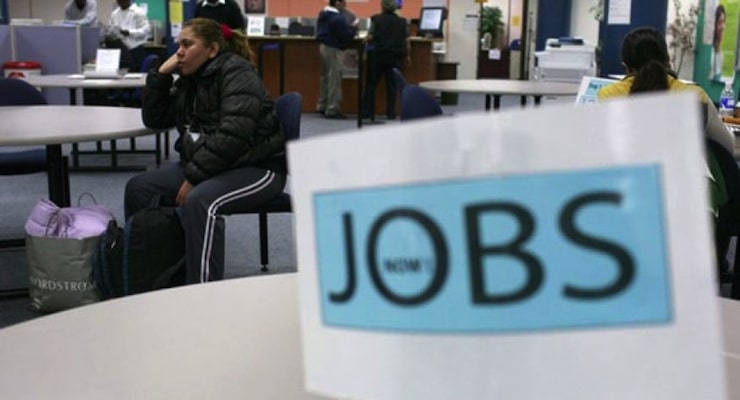

A discouraged worker sits in an unemployment office in San Francisco. (Photo: Reuters)
The number of Americans filing new claims for unemployment benefits rose more than expected last week, marking an increase in the firing rate among employers.
Weekly jobless benefits, or the measurement of initial claims for state unemployment benefits, increased 2,000 to a seasonally adjusted 279,000 for the week ended June 6. Meanwhile, claims for the prior week were revised up to show 1,000 more applications received than initially reported.
Still, this is the 14th straight week that claims have come in below the 300,000 threshold, which is usually associated with a firming labor market. What most outlets are not reporting, however, is that the Labor Department changed their methodology for calculating these claims roughly a few weeks after the trend began.
Economists polled by Reuters had forecast claims edging up to 277,000 and a Labor Department analyst said there was nothing unusual in the state level data.
The four-week moving average of claims — which is widely considered a more accurate gauge of labor market trends as it irons out week-to-week volatility — jumped 3,750 to 278,750 last week. Further, Thursday’s claims report showed the number of people still receiving benefits after an initial week of aid increased 61,000 to 2.27 million in the week ended May 30.






carla chang / June 11, 2015
So many people have given up, retired early, taken fictional disability, and run out of government benefits that they just quit applying for unemployment benefits.
We have a a very low labor usage, and 7 million+ involuntarily part time workers (versus a norm of 2 million) and flat or declining wage growth.
The fossil fuel energy sector has really been creating wealth, but that’s while swimming against the tide of regulation. Thankfully, the energy producers have still managed to innovate.
Meanwhile, costs for the average family have risen—my own health care insurance costs doubled (mine is up to $550/month… contrast this to my $25/month auto insurance from Insurance Panda… or my $12/month renters insurance from Gotham… both private-enterprise!).
I suppose we can all buy new Apple iphones, so the unemployed can speak to each other (probably on credit, like 40% of what the government spends), or we can pretend that the script printed by the fed was real wealth. The fed was printing about 6.5% of GDP worth of script and measuring (somehow) a 2% growth in economic activity. Do we measure the movement of printed script as wealth creation?
/